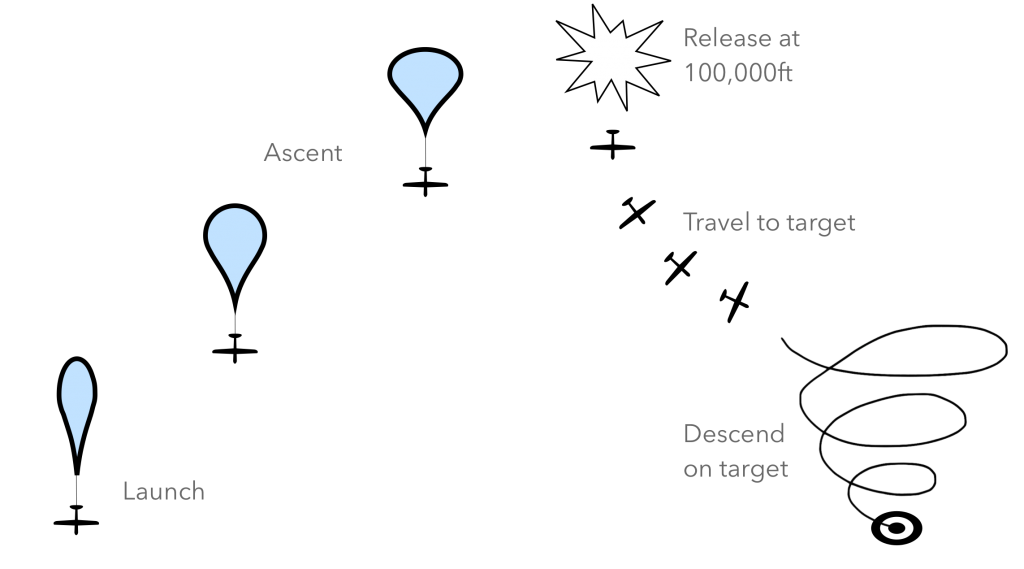Welcome to my first post!
I don’t have much yet, but here’s an excerpt from the proposal I submitted for my project. This was submitted to the Newton North High School Program which allows high school students to pursue an independent research project for the last few months of their senior year.
Hopefully it will give you an idea of what I have in mind for this project. From today (January 25, 2015), I have about 16 weeks to research, design, build and test my invention.
The proposal:
PROJECT TITLE: Coming home: fast, autonomous recovery of high altitude weather balloon payloads.
PROJECT SUMMARY: Throughout human history we have lived on the ground looking skywards. Nowadays, hobbyists and researchers frequent the upper reaches of the atmosphere with weather balloons carrying payloads high into the stratosphere. These payloads are of course limited by mass and volume, but also by recovery. Typically, after the lifting balloon pops, the payload free-falls back to the Earth. Some employ parachutes, but many simply accept destruction. Either way, this method of recovery is stressful on the contents of the packages, and often ends in an arduous fox-hunt lead by unreliable global positioning systems (GPS) in order to locate downed payloads, sometimes hundreds of miles from the launch point.
With a commercial grade inertial measurement unit (IMU), a GPS, and a barometer typically found in these payloads, all the information necessary to return the package to its launch point is available. I will build a control system and develop an autopilot, which, when dropped from a weather balloon at around 100,000 feet, will fly back autonomously to land at my feet.
Besides the “cool factor”, the guided recovery will allow the payload to fall more slowly and control descent in a manner that facilitates collecting the data these payloads generally seek to recover (e.g., radiation, atmospheric composition, temperature). The controlled descent and landing will also return the payload to a precise recovery location.
Fieldwork for this project includes developing and building an open source airframe and accompanying autopilot from hobby-grade components. The research content includes mastery of control theory, optimization, fault tolerance (on the autopilot side of things) and small, unmanned airframe design for upper atmosphere flight.
Without a doubt, this is ambitious project, in particular designing the autopilot to return the payload to safety. I can assemble the hardware in several days, but writing the code and optimizing the control logic may take many weeks. The greatest challenge I anticipate is integrating the inputs from the accelerometer, gyroscope, magnetometer, barometer, and GPS to find absolute position and orientation.
I also quickly put this picture together to explain what I have in mind:
Look for more research updates in the coming weeks!




